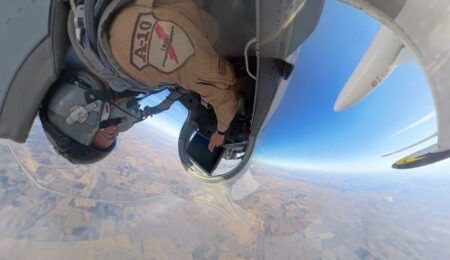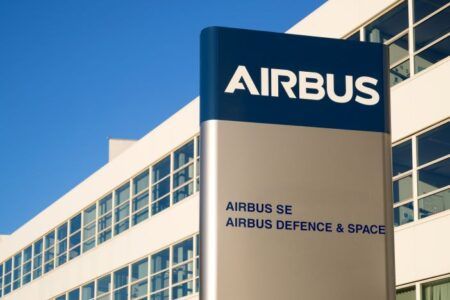After years of preparation, the 461st Flight Test Squadron and Joint Strike Fighter Integrated Test Force are ready to test the F-35 Lightning II’s ability to be decontaminated from chemical and biological weapons exposure.
In the heat of California’s High Desert, contractors, airmen and air force civilians have been completing construction of a flightline decontamination system and facility house for the decontamination of an F-35A. It will be the first time an F-35 has been decontaminated.
This test will show the Department of Defense and joint-partner nations that the F-35 has met the F-35 Joint Program Office’s requirements for decontamination, and will certify the weapon system to go into full-rate production.
The effort is to demonstrate that the fifth-generation fighter’s survivability can be maintained if exposed to such threats around the world.
The 461st Flight Test Squadron’s F-35A, tail number AF-04, will be contaminated several times, beginning at the end of August, and towed into the decontamination facility to see if it can be cleaned of chemical or biological weapons exposure. AF-04 is a highly-instrumented F-35 test jet with modifications to specifically collect data while being tested in the air or on the ground.
“Because these are tests we’re doing here, there’s an extensive amount of sensors and test equipment that we’re going to use to make sure the plane is clean. But, in the real world, theoretically, you put it in (the decontamination facility), run the system, pull the jet out and go fly,” said Joe Nemes, the Air Force Research Laboratory chemical and biological project lead engineer.
For the tests, the F-35A will be ‘contaminated’ with simulants, elements researched and tested to be safe, but which mimic the properties of the harmful agents.
“To contaminate the aircraft for our tests, we’re going to do engine runs at a different location (on the flightline) from the decontamination structure. We’re going to spray simulant down the engine inlet and let it get distributed throughout the interior of the aircraft,” said Melanie Link, 461st Chemical/Biological 06 project lead.
“Once that contamination is done, the F-35 will get towed to the decontamination shelter and decontaminated. During decontamination, samples will be taken from both the aircraft and surrounding environment so we’ll have a baseline to see the effectiveness of how the decontamination process is working from beginning to end.”
“Once complete they’ll tow it to a third site and collect more samples and conduct another engine run to verify tat no damage was done to the aircraft,” Link said.
Testing will be conducted with AF-04 through December, and additional testing will be conducted with a Marine Corps F-35B from the operational fleet in early 2017. That effort will be the final decontamination test for the F-35 Joint Program Office.
August 26, 2016




